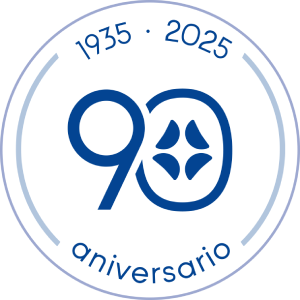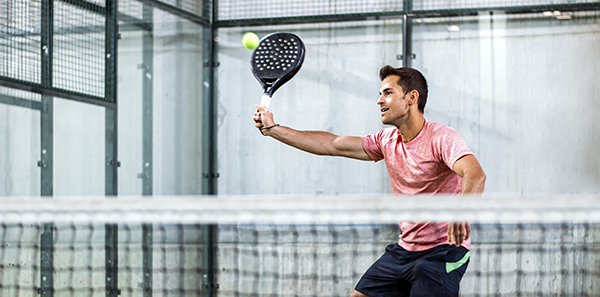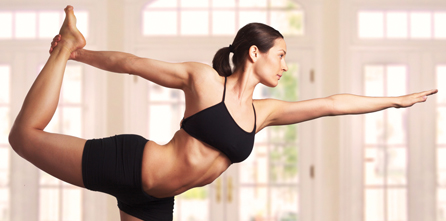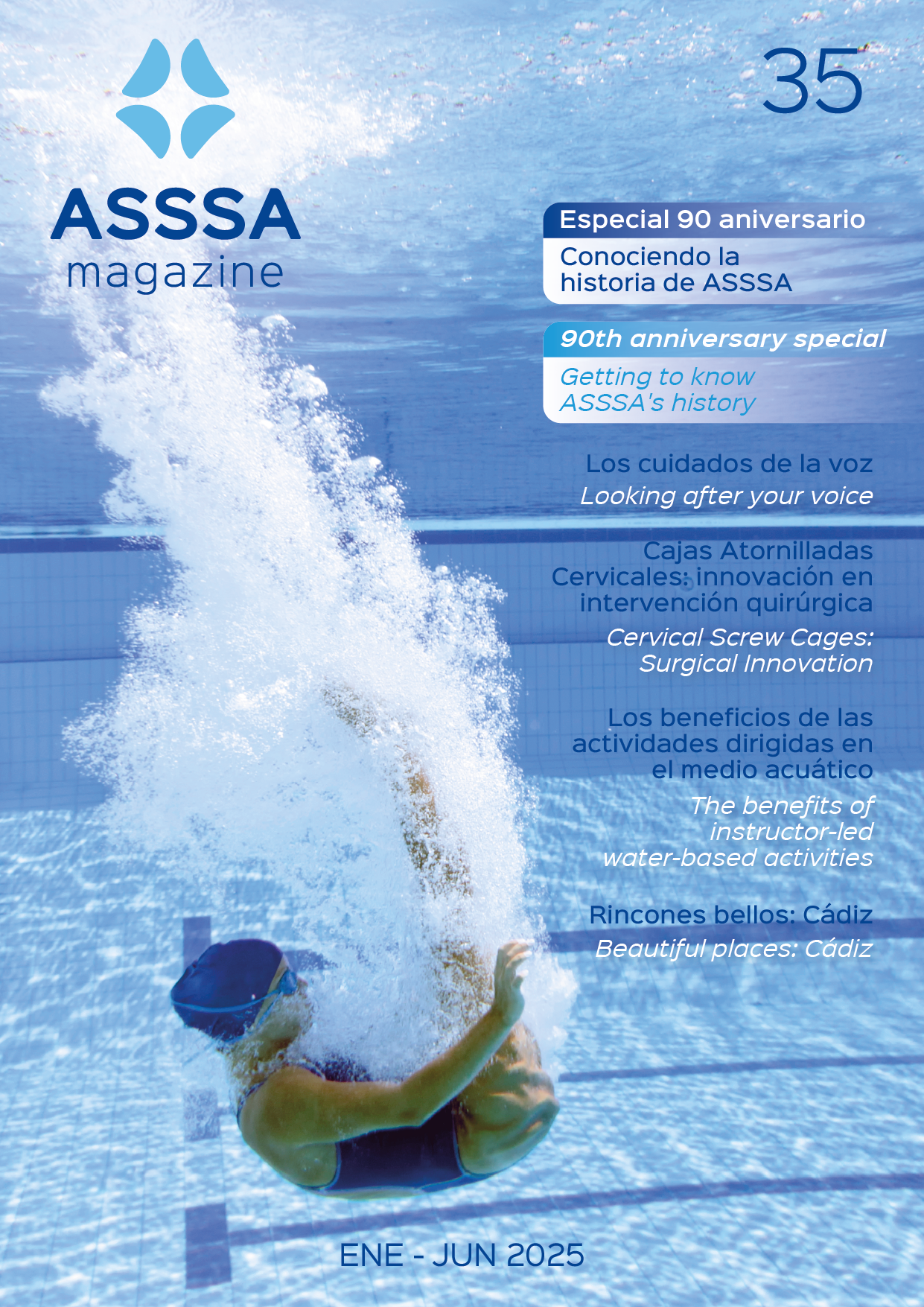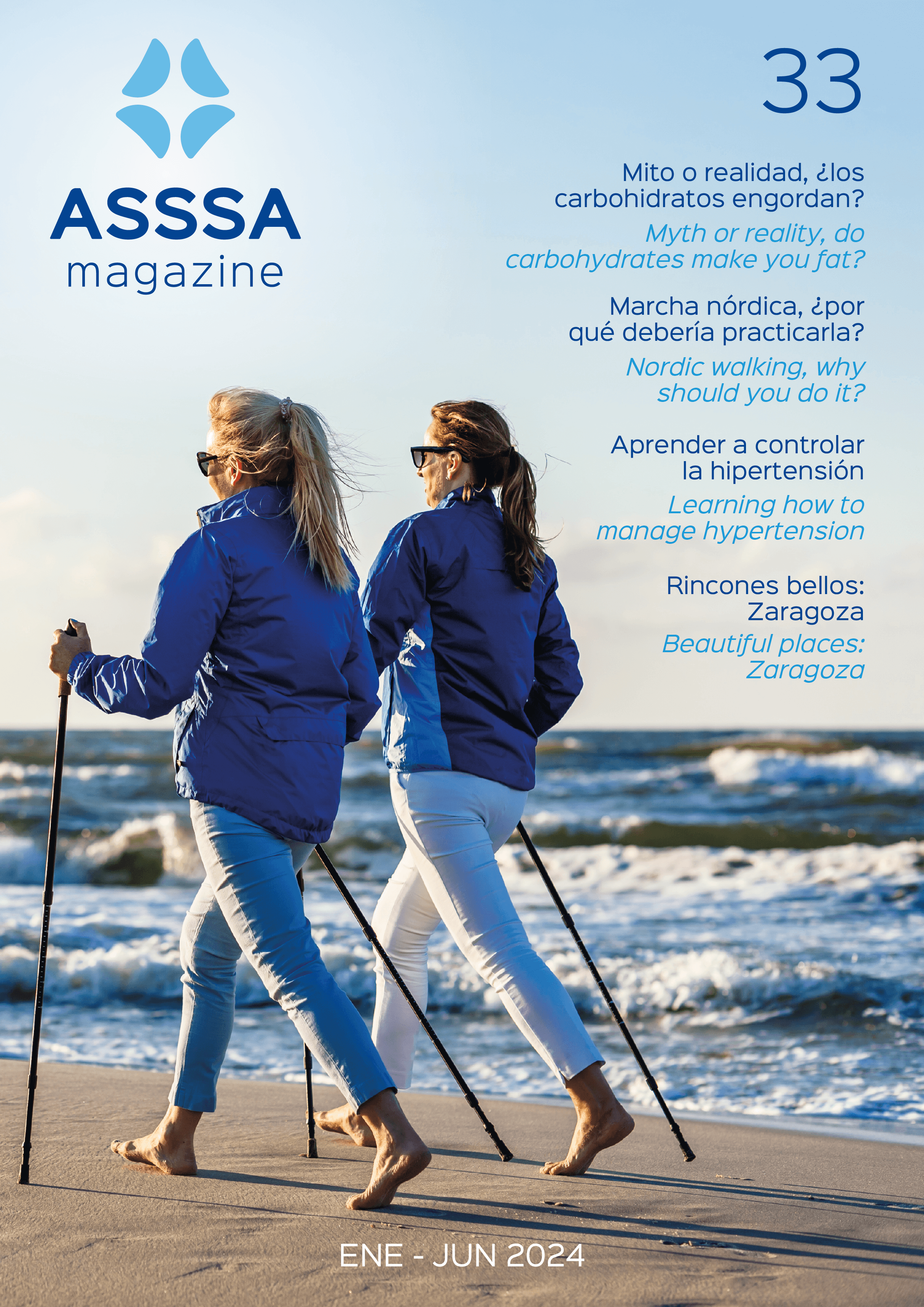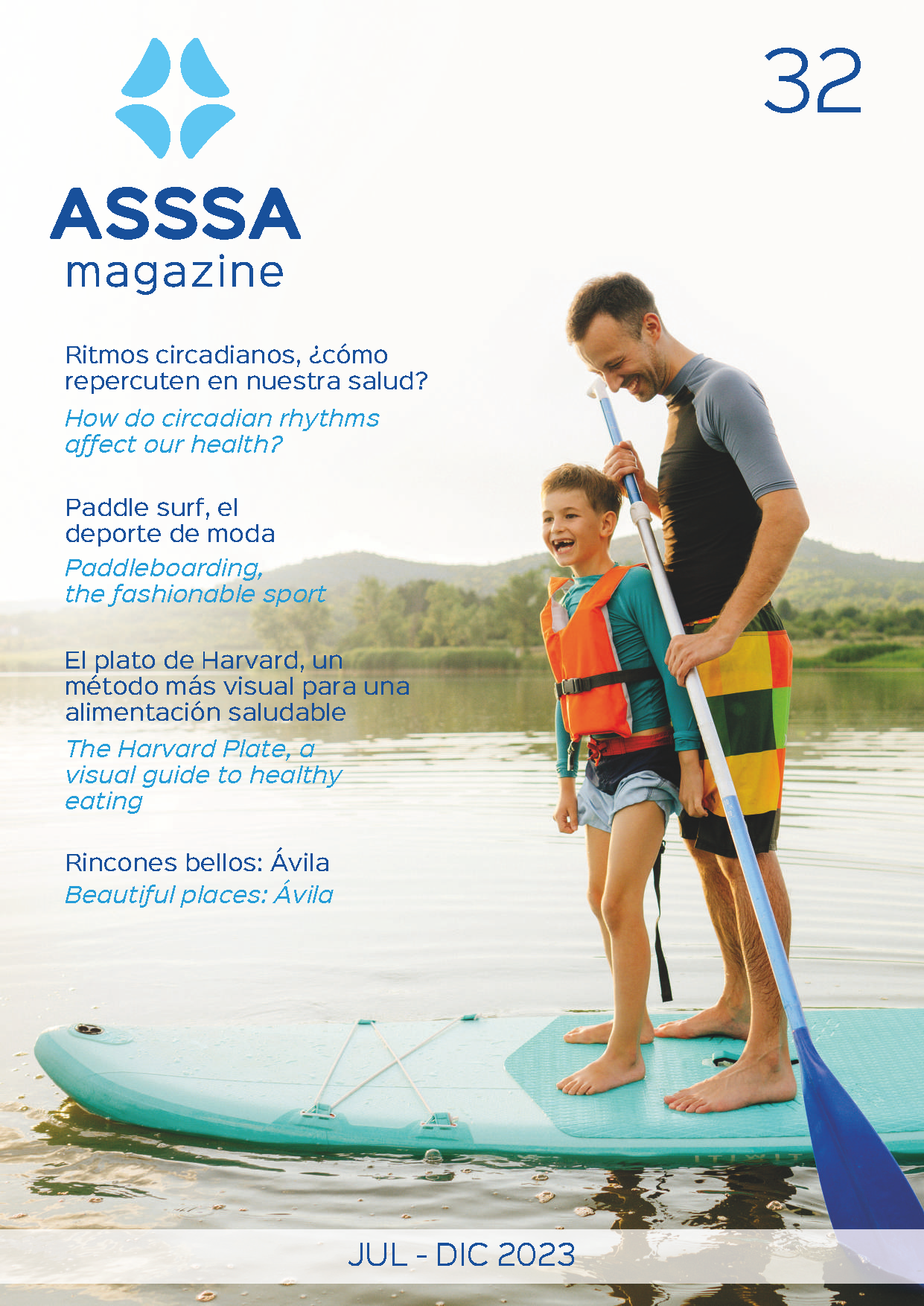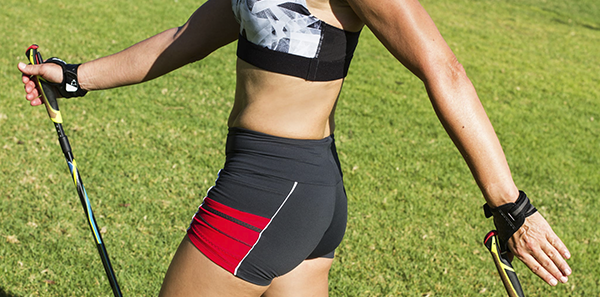
Originally from Finland, Nordic walking was introduced in 1930 so the national Nordic ski team could continue with their training during the summer months. Simulating snowy conditions, they walked at a fast pace with ski poles. The sport arrived in Spain in 2005 and 10 years later it was recognised as a federated sport.
What does walking with poles consist of?
Walking is a resistance training method in which the muscles of the legs, hips, mid torso and arms all work together. By adding a set of poles, the benefits become greater, as more energy is consumed with less perceived effort, increasing efficiency.
Nordic walking is an aerobic, low-impact activity based on walking with adjustable poles to propel the body forward. The goal is to optimise the effort made by the body while walking. To achieve this, technique is important:
- Follow your natural gait pattern.
- Keep to your normal stride length or slightly lengthen it by extending the arm swing.
- Don’t tilt your head (look straight ahead) to avoid tension on the trapezius muscle.
- Keep your torso upright so as not to load the lumbar region.
- Your arms should be stretched out and making a pendulum movement.
- Place the pole in a mid-area of balance and push from front to back following the natural swing of your arms.
- Relax your hand and release the handle from when it reaches the hip line.
- Use the feet actively, striking with the heel followed by the sole and pushing yourself forward with all your toes.
Benefits
This sport involves all the major muscle chains, as it works the lower and upper parts of the body, correcting alignment and respecting the biomechanical characteristics of walking. It’s successfully applied in functional rehabilitation and in pre- and postoperative processes. It also works as a form of prevention and adapted sport.
These are its benefits:
MIND: provides well-being and activates endorphins, the happiness hormones.
HEART: improves the cardiovascular system, increasing its volume and blood circulation. Opening and closing the hand also produces a pumping effect.
LUNGS: gradually increases lung capacity.
BACK: favours correct posture, strengthening the abdominal muscles.
ARMS: tones shoulders, triceps and forearm muscles.
CORE: works the central part of the body from the sternum down to the pelvic area.
KNEES AND JOINTS: helps prevent overloading the hips, knees and ankles, and is also good for functional foot rehabilitation.
EXTREMITIES: improves coordination between arms and legs.
Nordic walking is becoming increasingly popular because it can be done in any outdoor environment and at any time of year. It’s also a social activity that’s inexpensive and environmentally friendly that results in a number of physiological improvements. All you need to enjoy this all-round sport is a set of two special poles, supervision by a professional instructor and the right sportswear.
Teresa Alonso
Nordic Walking Instructor
Vice-President of Alicante Nordic Walking Club

